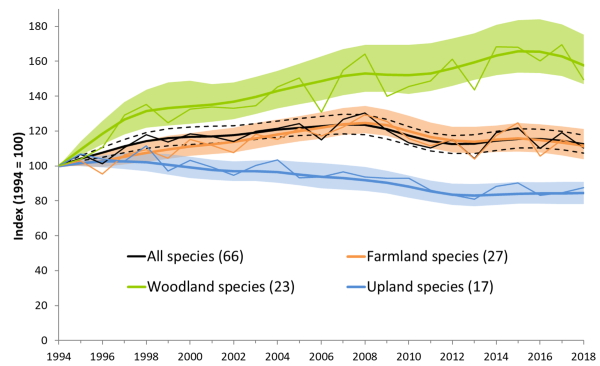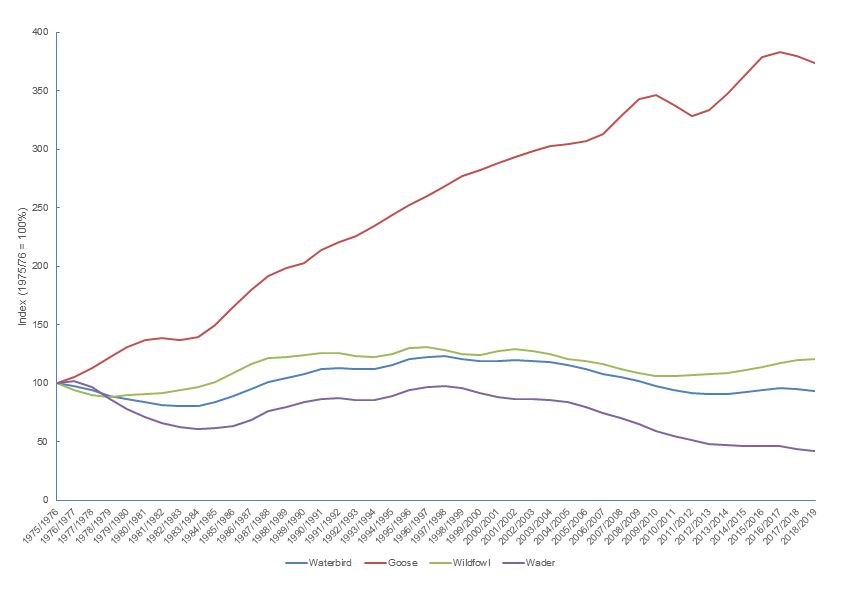The latest figures for bird indicators in Scotland were released in November 2019 (terrestrial breeding birds) and September 2021 (wintering waterbirds).
- The Scottish indicators are produced by BTO for NatureScot.
Terrestrial breeding birds
The indicator shows a positive long-term trend for woodland birds in Scotland, with this group increasing by 58% between 1994 and 2018.

Chiffchaff, Great Spotted Woodpecker, Blackcap, Great Tit, Bullfinch, Lesser Redpoll and Tree Pipit have all increased in abundance, some of which can be attributed to northward shifts in breeding range and changes in the extent of suitable habitat.
The indicator for farmland birds is also positive, with Goldfinch, Whitethroat and Reed Bunting among the species contributing to a 12% increase since 1994, albeit following declines in range among many farmland species since the 1970s revealed by the BTO's bird atlases.
Upland birds declined by 15% during the BBS period, populations of Dotterel, Curlew, Black Grouse, Common Sandpiper and Hooded Crow having decreased by more than 50%. Most of these species have been negatively affected by changes in land management or climate change which is also potentially linked to a northward shift in the centre of the Carrion Crow/Hooded Crow hybrid zone and consequent decline in Hooded Crows.
Many species exhibited a short-term decline between 2017 and 2018, probably as a result of the so-called 'Beast from the East'. These declines were most common among woodland residents, with Wren, Bullfinch, and Goldcrest the most strongly affected. Robin, Treecreeper, Great Spotted Woodpecker and Lesser Redpoll also declined, though to a lesser extent.
Wintering waterbirds in Scotland
This indicator tracks the population trends of 41 species, which are primarily counted by volunteers taking part in the BTO/RSPB/JNCC Wetland Bird Survey (WeBS), supplemented with additional targeted counts for geese and swans, and periodic surveys of rocky shore waders (the Non-Estuarine Waterbird Survey, NEWS).
This indicator showed that overall waterbird numbers have decreased by 7%. Much of this decline is explained by waders, with numbers for the 14 species monitored 58% lower than in winter 1975/76. There was more positive news for ducks and swans (16 species), which increased by 21%, and geese (seven species/populations), which rose in number by 274%.

Our programme of research in Scotland aims to better understand the issues affecting our bird populations in order to inform future management. Current work programmes include collaborative research on breeding wader management and conservation, detailed studies of Short-eared Owl ecology and movements, and work to understand how woodland expansion and regeneration can impact bird populations.